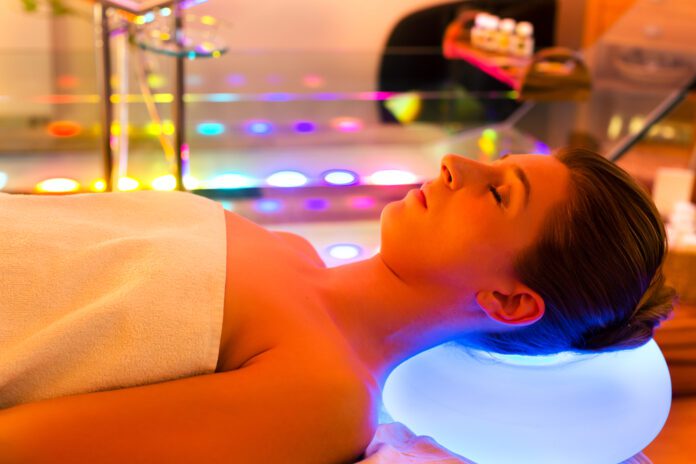Color therapy (or chromotherapy) is an alternative remedy that uses color and light to treat physical or mental health by balancing the body’s energy centers, also known chakras. This concept dates back to ancient Egyptians who used sun-activated solarium rooms constructed with colored glass for therapeutic purposes. Today, both conventional and holistic practitioners acknowledge the bright potential of art therapy (which, naturally, includes color). And, although color therapy remains a gray area in Western medicine, enthusiasts are tickled pink over its influence.
How Color Therapy Works
According to HealthyPlace.com, a mental health site, color therapy is based on the premise that different colors evoke different responses in people. Some colors are considered to be stimulating, whereas others may be soothing and, therefore, colors may impact one’s energy level, mood, appetite, emotions and even decision-making. Perhaps that means that color and lighting (i.e. an illuminated form of color) can be useful healing tools in combating an array of aliments.
Color therapy, per HealthyPlace.com, has been suggested (though not proven) to positively impact academic performance, aggressive/hostile behavior, asthma, attention-deficit hyperactivity disorder, blood pressure, bronchitis, dyslexia and learning disabilities, enhanced athletic performance, epilepsy, insomnia, lethargy, lung cancer, migraine, muscle relaxation, prison reform, stress, uterine fibroids and vision disorders.
Color may also have adverse effects. The Epilepsy Foundation reports that about 3% of people with epilepsy have photosensitive epilepsy, in which exposure to flashing lights at certain intensities or to certain visual patterns triggers seizures. A study conducted at the University of Goldsmiths London found that certain colors were more likely to cause these epileptic fits. For example, red-blue flickering stimulus causes larger cortical excitation than red-green or blue-green stimulus.
The Chakra Rainbow of Color Therapy
1. Root: At the spine, the ‘grounding’ chakra impacts survival instincts, stamina and passion. “Red” may stimulate circulation.
2. Sacral: At the pelvis, the ‘optimism’ chakra connects to pleasure, enthusiasm and sexuality. “Orange” may be an antibacterial agent and ease digestion.
3. Solar Plexus: At the naval, the ‘willpower’ chakra is associated with happiness. “Yellow” may aid the lymphatic and/or neuromuscular systems.
4. Heart: At the heart, the ‘acceptance’ chakra is tied to balance and love. “Green” may fight depression.
5. Throat: At the throat, the ‘expression’ chakra focuses on communication and knowledge. “Blue” may calm breathing and/or the heart-rate and eliminate toxins.
6. Third Eye: At the brow, the ‘intuition’ chakra is associated with clairvoyance.“Indigo” may aid headaches.
7. Crown: On the head, this ‘knowledge’ chakra aligns with imagination and spiritual awakening. “Violet” may calm the nervous system.
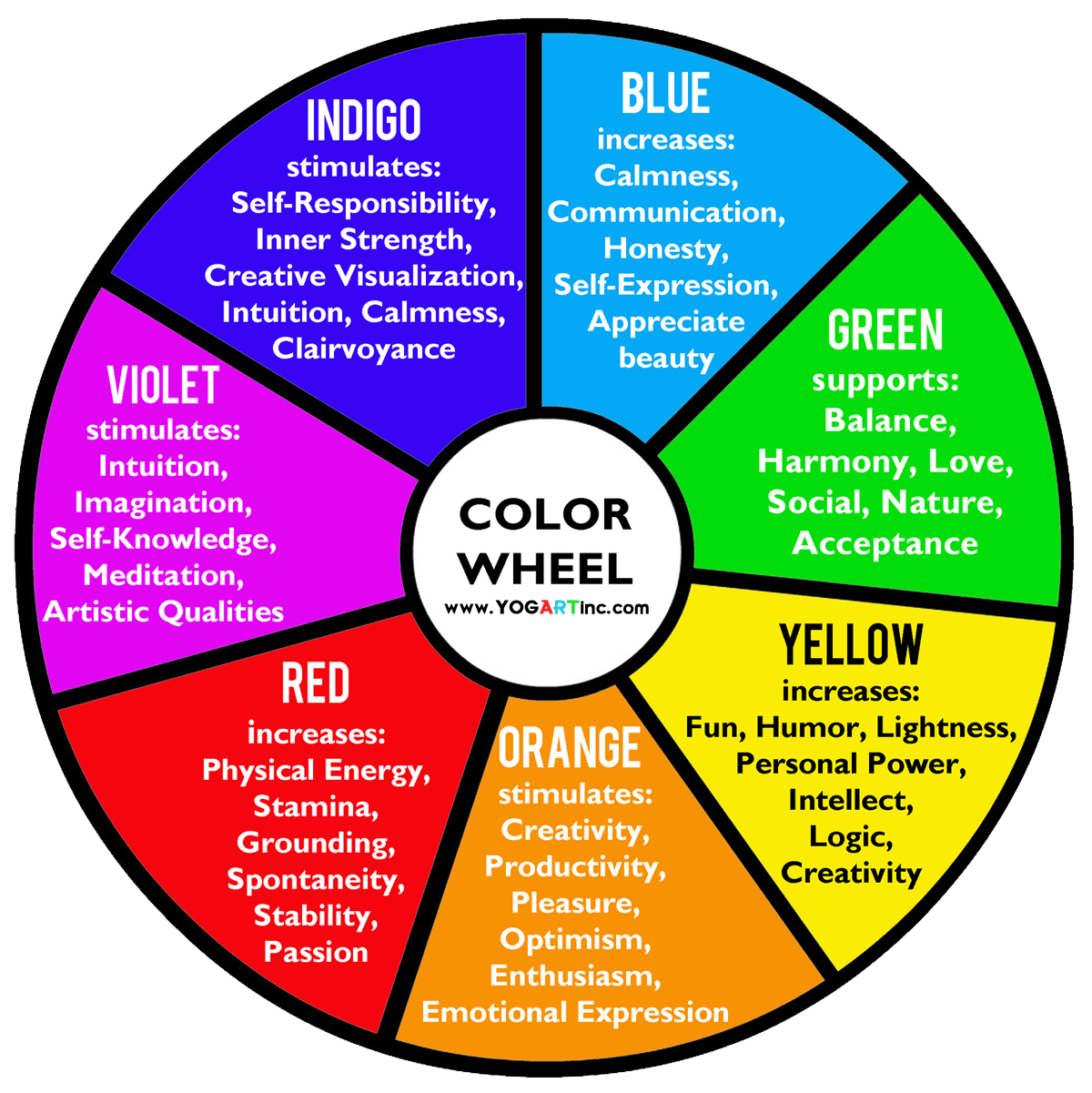
Ways to Integrate Color Therapy
Environment Design
The effects of color should be carefully considered when designing and constructing an inclusive classroom, according to findings published in the Journal of Family & Consumer Sciences Education. That’s because “some students (such as those with attention deficit hyperactivity disorder and autism spectrum disorders) may be more sensitive to color in the learning environment due to heightened sensory responses and strong visual processing abilities” and, so, over-stimulation through color could cause sensory overload. For example, exposure to red may cause the heart to beat faster, increase blood pressure and heighten the sense of smell. In contrast, blue may slow the pulse rate, lower body temperature and reduce appetite. Another study published in Frontiers in Psychology found that boys with autism were most overstimulated by yellow, and much preferred green and brown hues.
Environmental designer Frank H. Mahnke addresses academic design in his book Color, Environment and Human Response. He recommended warmer color schemes for elementary schools, cool hues to enhance concentration in upper level grade schools and pale green to enhance quietness in libraries. For ways to integrate color into learning, check out suggestions by the Kaplan Learning Company.
Medical institutes are integrating color therapy and art therapy too. To help ease stress among patients and caregivers, AdventHealth for Children in Orlando installed a Philips Ambient Experience lighting system in both the emergency department and patient rooms to achieve customizable illumination and imaging. “I have seen color therapy applied to the décor [at AdventHealth],” shares board certified pediatrician Stacy McConkey, MD, who says art therapy – such as coloring, painting, beading and music – is an effective distraction for her anxious patients. At her private practice, the Center for Pediatric and Adolescent Medicine, Dr. McConkey created a sense of tranquility using ocean, jungle and other nature paintings with calming blues and greens. “I’ve seen some neat outcomes with patients that have tried alternative things. I am OK with laying these [approaches] on top of medically-proven care,” she proclaims.
If you’re interested in integrating intentional color selections into your decorating, contact at color specialist, at Sherwin Williams for example, to achieve a mood-enhancing environment.
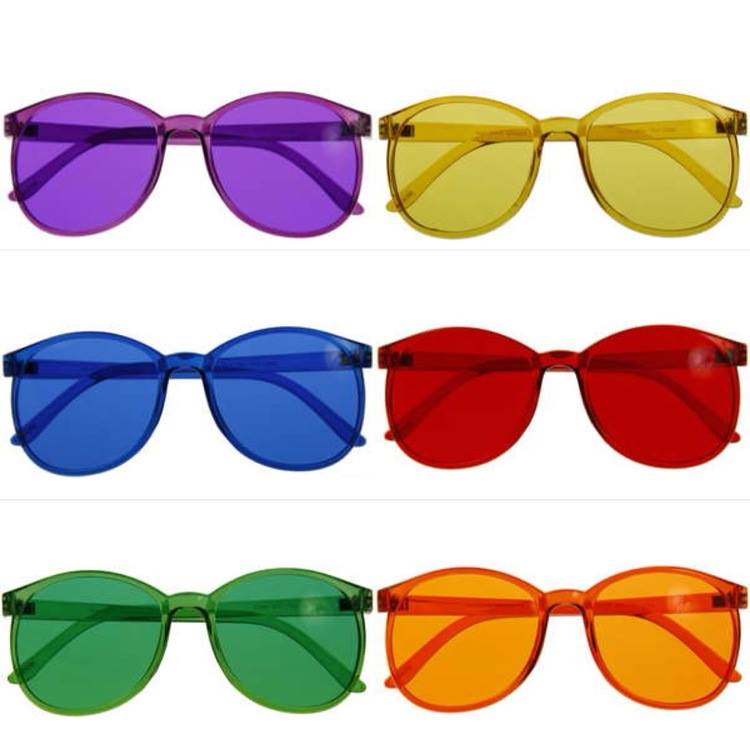
Color Gear
Freelance artists Chantel Rodriguez and Augusto (Goose) Herrera took their vision of color therapy into literal form. “Our glasses are like portable solariums that allow you to choose how you want to feel because colors influence us,” says Rodriguez, who co-founded ZEN30, an eyewear line of seven UV lens corresponding to the body’s seven chakras. Herrera explains that each color emits its own frequency; color enters through the eye and, eventually, reaches the brain which redirects the signal throughout the body. You can take an online test to identify which chakras are overactive, underactive or balanced to select an optimal hue – for recommended daily wear of 30 minutes. Sound shady? Users see results! For example, Camila Sofi, of Fort Lauderdale, says her niece, who has autism, wore a blue pair and displayed more expression and lengthened attention span.
Aromatherapy uses essential oils distilled from various plants. According to the Mayo Clinic, it stimulates “smell receptors in the nose, which then send messages through the nervous system to the limbic system ─ the part of the brain that controls emotions.” Studies have shown that aromatherapy might reduce anxiety, depression, headaches, pain (especially for people with kidney stones or osteoarthritis) and also improve sleep and quality of life. There is a line of color specific essential oils that can be used in a diffuser or added to a bath. The green oil, for example, claims to balance the heart chakra with a blend of cedarwood, eucalyptus and pine.
Color Therapy Focused Activities
Color Yoga & Meditation
Color yoga blends color concentration with chakra-opening poses. Participants can wear ZEN30 glasses, for example, or practice is a color-lit studio. This type of yoga specifically focuses on the powers of the chakra rainbow. Similarly, to incorporate into meditation while taking intentional breathes, visualize yourself surrounded by your color of choice.
Art Workshops
Research, presented at a cardiovascular conference, found that stroke survivors who reported liking art had an easier time walking, were more energetic and less depressed, and felt happier and less anxious. Plus, their memory and communication skills fared better. Another study, from University College London, found that the same parts of the brain are stimulated when one looks at art as when one is in love; both releasing a chemical dopamine promoting feelings of affection and desire.
Art therapy ─ which, of course, includes exposure to color ─ is considered an effective rehabilitative method to aid physical and emotional health. As with physical therapy, repetitive exercise (i.e. painting strokes) of weaken muscles can help stroke survivors gain elasticity, strength and balance. For mental well-being, art therapy boosts creative expression, ignites a calming effect and can relieve stress. Stroke survivors with aphasia, a language impairment, may especially feel drawn to the creative expression of art, though art therapy can lead to increased visual and/or verbal communication for all survivors.
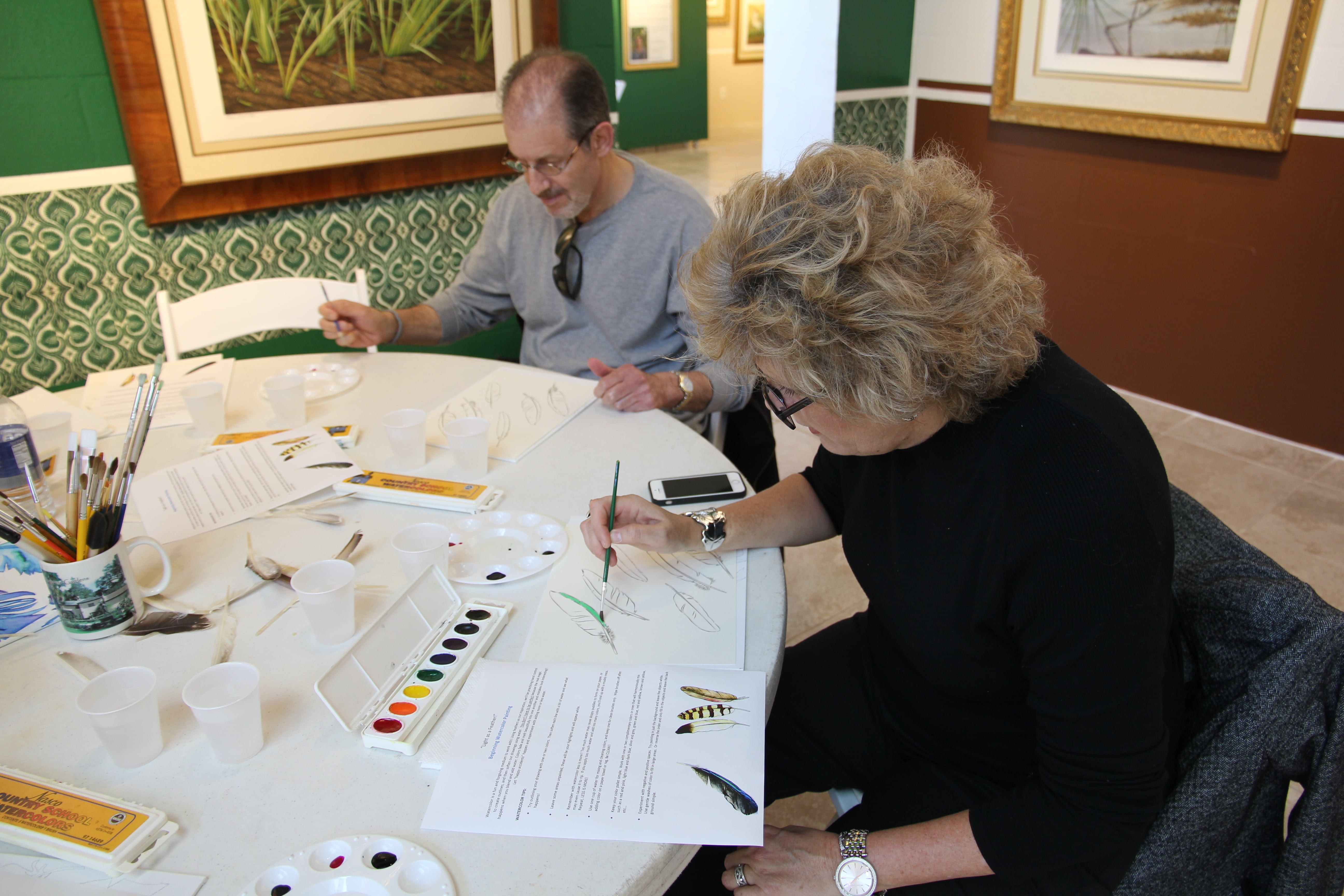
“Art engages both sides of the brain to combine motion with thought,” says Valerie Greene, a stroke survivor and founder of Global Stroke Resource, also known as Bcenter, a nonprofit providing resources, hope and direction. The left side of the brain’s functions includes communication, repetition and detail; the right side controls imagery, memory and creativity. “Color therapy was a primary focus for my personal art therapy. Specific colors evoke emotion; for instance, blue is calming and yellow stimulates happiness.” Through the Bcenter, Greene has hosted art therapy sessions for fellow survivors.
Vanness Johnson, art director for Heroes of Freedom, a nonprofit serving disabled veterans, agrees: “Art gives [veterans] an avenue to dig deeper within themselves and express,” with a goal to combat post-traumatic stress.
Colorpuncture
Developed by Peter Mandel, a German naturopath and acupuncturist who viewed the body and mind as a single continuum constantly informed by light, colorpuncture involves the application of colored light frequencies to “acu-points” on the skin. Each color consists of different wavelengths and stimulates intra-cellular communication, according to colorpuncturists. Author and teacher Manohar Croke, Director of the U.S. Esogetic Colorpuncture Institute, proclaimed, “I believe colorpuncture is a remarkable adjunct tool to help psychotherapists deepen and enhance their work with their clients” to surface and release the imprints of psychological stress and trauma.
Have you tried color therapy? Share with us on Facebook, Twitter and Instagram!
Want more holistic information? Read Holistic Therapies You Need to Know About.
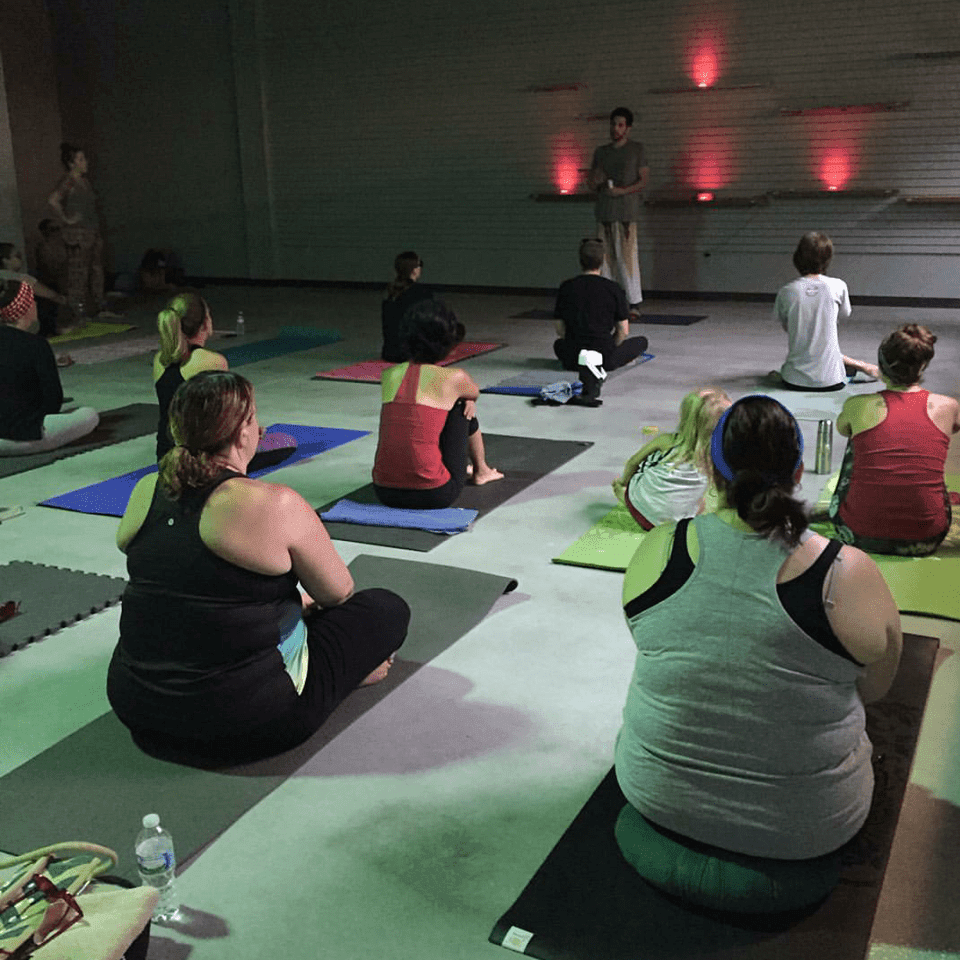
Feature image credit: AdventHealth Orlando
For additional resources on Art Therapy for Children and Teens, see this resource.
Nancy DeVault is an award-winning writer/editor contributing to local and national publications. Her storytelling spans a wide range of topics, including charity, disability, food, health, lifestyle, parenting, relationships and travel. Married with two kiddos, Nancy describes herself as a lover of the outdoors, fitness, news, traveling and binge reading magazines while sipping coffee.
- Ashby, Nina (Author)
- English (Publication Language)
- 176 Pages – 06/01/2018 (Publication Date) – Hampton Roads Publishing (Publisher)
- Bloom, Primrose (Author)
- English (Publication Language)
- 59 Pages – 11/05/2023 (Publication Date) – Independently published (Publisher)
- Use Color to Discover Your Best Self: Colors aren’t just for beauty; they resonate with our very soul. With these holistic chromotherapy glasses, you can tap into the rhythm of each vibrant hue, fine-tuning your mood and revitalizing your spirit.
- Each Pair Is Packed with Benefits: Every pair in our colored sunglasses pack of 10 carries a special power, from increasing happiness and creativity to amplifying motivation and inner peace. Let the colors bolster your day in their own unique way.
- Forever in Vogue and Made to Last: These classic square chromotherapy light glasses will never go out of style. Plus, our UV-blocking color lens glasses are scratch-resistant, built sturdy, and include a matching soft felt-lined pouch for safekeeping.
- Fabulous Fit for Every Face Shape: Our colored glasses are crafted for everyone. These light therapy colored glasses fit seamlessly with heart, diamond, oval, rectangle, or round face shapes, so all men and women can enjoy their benefits.
- Shining a Light On Our Mission: We’re here to enhance your inner vitality, ensuring every day is lived with purpose and zest. With our light therapy products, you’ll be able to elevate your overall health and well-being, and, in turn, your life.
- Hardcover Book
- Wilde, Cindy (Author)
- English (Publication Language)
- 128 Pages – 05/26/2015 (Publication Date) – Running Press Adult (Publisher)




